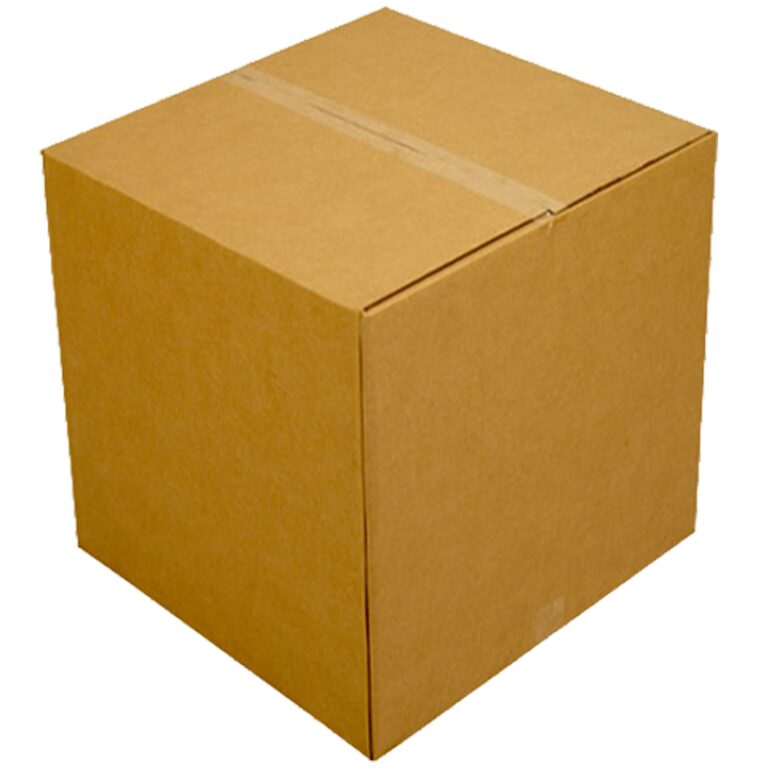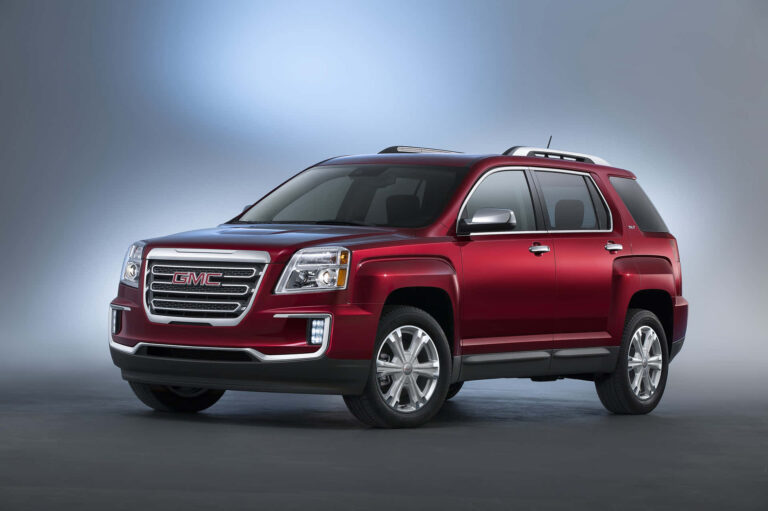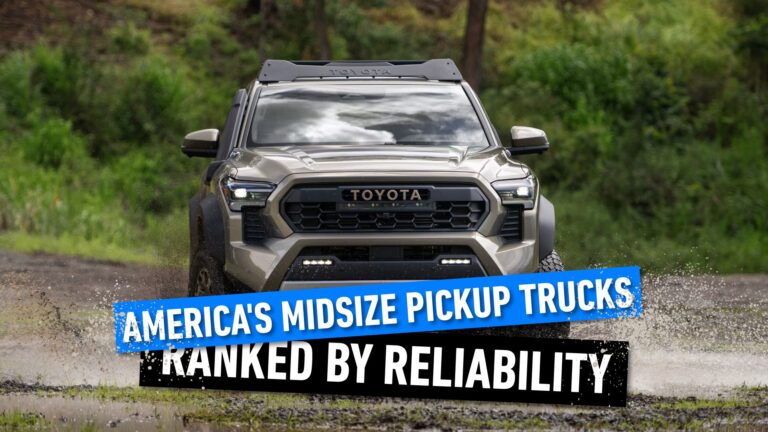I Have A Truck Cap That Is On A Ford F Extended Cab: What Other Trucks Will This Fit?
I Have A Truck Cap That Is On A Ford F Extended Cab: What Other Trucks Will This Fit? cars.truckstrend.com
Introduction: The Quest for Perfect Fit
You’ve got a truck cap, a valuable accessory that expands your truck’s utility by providing secure, weather-protected storage. Perhaps you’re upgrading your Ford F-Series Extended Cab, or maybe you acquired a cap from a friend and are wondering if it’s a treasure or a white elephant. The question inevitably arises: "I have a truck cap that is on a Ford F Extended Cab, what other trucks will this fit?"
I Have A Truck Cap That Is On A Ford F Extended Cab: What Other Trucks Will This Fit?
This isn’t a simple question with a universal answer. Unlike a universal car cover, truck caps are highly specific to the vehicle’s bed dimensions, cab configuration, and even the subtle contours of the truck’s body lines. A perfect fit ensures optimal protection, aesthetics, and structural integrity. A poor fit can lead to leaks, damage to the cap or truck, and an unsightly appearance. This comprehensive guide will delve into the critical factors determining truck cap compatibility, providing you with the knowledge and practical steps to assess if your Ford F-Series Extended Cab cap can find a new, suitable home.
The Anatomy of a Truck Cap Fit: Understanding the Core Dimensions
To understand compatibility, you first need to understand what makes a truck cap fit a specific vehicle. It’s far more than just "long bed" or "short bed." Here are the key dimensions and features that dictate a cap’s fit:
-
Bed Length: This is, without a doubt, the most critical factor. Measured from the inside top edge of the bulkhead (front of the bed) to the inside top edge of the tailgate, this measurement must be virtually identical between the cap and the truck it’s intended for. Even an inch or two difference will result in significant overhang or an unfillable gap. Ford F-Series Extended Cabs (often referred to as SuperCabs) typically come with 6.5-foot (short box) or 8-foot (long box) beds, depending on the generation and trim.

Bed Width: While full-size truck beds generally share similar widths, there are subtle differences. This is measured from the outside edge of one bed rail to the outside edge of the other. The cap’s base must sit flush on these rails for proper sealing and clamping. Variations of even an inch can compromise the seal or prevent proper clamping.
-
Bed Rail Height: The height of the truck’s bed rails, from the bed floor to the top edge, can vary between manufacturers and even between different generations of the same model. The cap’s sides are designed to align with this height. A cap from a truck with lower rails might sit too low on a truck with higher rails, leading to an awkward appearance or issues with the tailgate. Conversely, a cap from a higher-railed truck might leave a gap above a lower-railed bed.
-
Cab-to-Bed Contour (Bulkhead Shape): This is often the trickiest factor for cross-brand compatibility. The front of the truck cap is designed to mate flush with the specific curve or angle of the truck’s cab behind the rear window. Some trucks have a relatively flat rear cab wall, while others have a noticeable curve or bulge. If your cap’s front profile doesn’t match the target truck’s cab, you’ll have an unsightly gap, or worse, the cap won’t sit properly on the bed rails.
-
Tailgate Opening/Angle: The rear of the truck cap is often contoured to match the specific angle and opening of the tailgate. Differences here can lead to gaps that allow water intrusion or make it difficult to open/close the tailgate with the cap installed.

-
Generation-Specific Design: Even within the Ford F-Series, dimensions and body lines evolve significantly between generations. A cap from a 10th generation F-150 (1997-2003) will likely not fit a 13th generation F-150 (2015-2020) perfectly, even if both are Extended Cabs with 6.5-foot beds, due to changes in bed rail height, cab contour, and overall styling.

Your Ford F-Series Extended Cab Cap: What Are Its Typical Dimensions?
To assess compatibility, you must first precisely measure your existing truck cap and the bed it came from.
Steps to Measure Your Cap and Truck Bed:
-
Measure Bed Length:
- Truck Bed: Measure from the inside top edge of the bulkhead (the wall closest to the cab) to the inside top edge of the tailgate, with the tailgate closed.
- Cap: Measure the length of the cap’s base from front to back. These two numbers must match closely.
-
Measure Bed Width:
- Truck Bed: Measure the width from the outside edge of one bed rail to the outside edge of the other, ideally at the front, middle, and rear of the bed, as some beds taper slightly.
- Cap: Measure the width of the cap’s base from side to side. Again, these should be very close.
-
Measure Bed Rail Height:
- Truck Bed: Measure from the floor of the truck bed up to the very top edge of the bed rail.
- Cap: Measure the height of the cap’s side walls that rest on the rails. This dictates how high the cap sits above the bed rails.
-
Observe Cab Contour:
- Truck: Stand back and look at the profile of the truck’s cab directly behind the rear window. Is it flat, slightly curved, or significantly rounded?
- Cap: Look at the front face of your cap. Does it have a flat, gently curved, or significantly curved profile?
Common Ford F-Series Extended Cab (SuperCab) Bed Lengths:
- Ford F-150 SuperCab: Most commonly found with a 6.5-foot bed. Older generations (pre-1997) might have also offered an 8-foot bed with the extended cab.
- Ford F-250/F-350 Super Duty SuperCab: Often found with an 8-foot bed, though some generations/trims might have offered a 6.75-foot bed.
Knowing the exact dimensions of your cap, derived from its original Ford F-Series Extended Cab, is your starting point for any compatibility assessment.
Identifying Potential Candidates: Other Trucks to Consider
With your cap’s dimensions in hand, you can now consider other trucks. The general rule of thumb is: the closer the make, model, and generation, the higher the chance of a good fit.
-
Same Generation Ford F-Series (Highest Probability):
- Ford F-150 SuperCab (Same Generation): If your cap came off, say, a 2010 F-150 SuperCab with a 6.5-foot bed, it is almost guaranteed to fit another 2009-2014 F-150 SuperCab with the exact same bed length. This is your best bet for a perfect, seamless fit.
- Ford F-250/F-350 Super Duty SuperCab (Same Generation, Different Model): This is less likely to be a perfect fit for an F-150 cap, or vice-versa. While both are Ford, the F-150 and Super Duty series often have different bed widths, rail heights, and cab contours, even within the same model year range. Super Duty beds are typically wider and have different rail designs.
-
Different Generation Ford F-Series (Low Probability):
- As mentioned, significant changes occur between generations. While the bed length might be similar, the width, rail height, and especially the cab contour will likely be different enough to prevent a perfect fit. You might get it to sit, but it won’t seal properly or look right.
-
Other Full-Size Truck Brands (Chevrolet Silverado/GMC Sierra, Ram 1500, Toyota Tundra, Nissan Titan) – Very Low Probability of Perfect Fit:
-
This is where compromises almost certainly come into play. While many full-size trucks offer similar bed lengths (e.g., 6.5-foot), achieving a perfect fit across brands is exceedingly rare due to:
- Different Cab Contours: This is the biggest hurdle. A Ford cap’s front profile is unlikely to match a Chevy, Ram, or Tundra cab perfectly, leading to gaps or an inability to sit flush.
- Varying Bed Rail Heights: Modern trucks have seen a trend towards higher bed rails. An older cap might sit too low or too high.
- Subtle Width Differences: Even a small difference in width can prevent proper clamping and sealing, leading to leaks and instability.
- Tailgate Design: The rear of the cap may not align with the target truck’s tailgate.
-
Practical Examples:
- Chevy Silverado/GMC Sierra (Extended Cab/Double Cab): While often having 6.5-foot beds, their cab contours and bed rail heights are typically distinct from Ford.
- Ram 1500 (Quad Cab): Ram trucks, especially newer ones, often have taller and wider beds, making a Ford cap unlikely to fit well.
- Toyota Tundra (Double Cab): Tundra beds and cabs have unique designs that rarely cross-match well with domestic brands.
- Nissan Titan (King Cab): Similar to Tundra, the Titan has distinct body lines.
-
Conclusion on Cross-Brand Compatibility: While it’s theoretically possible to force a cap onto a different brand’s truck if the bed length is identical and you’re willing to accept significant aesthetic compromises and potential sealing issues, it is highly unrecommended for a good, functional, and attractive fit. The best candidates will always be another truck of the exact same make, model, and generation as the one the cap originally came from.
Practical Steps for Assessing Fit
If you’ve identified a potential candidate truck (ideally, another Ford F-Series SuperCab of the same generation and bed length), here’s how to physically assess the fit:
- Gather Dimensions: Have your cap’s precise length, width, and height measurements, along with the target truck’s bed measurements. Compare them on paper first.
- Visual Inspection: If the numbers are promising, carefully place the cap onto the target truck’s bed.
- Check the Front: Does the cap sit flush against the cab? Are there significant gaps at the top, bottom, or sides of the cap where it meets the cab?
- Check the Sides: Does the cap sit evenly and fully on the bed rails? Is there overhang or under-hang?
- Check the Rear: Does the cap meet the tailgate cleanly? Does the tailgate open and close without interference?
- Check Clearance: Look for any obstructions like antennas, third brake lights, or bed-mounted cargo systems that might interfere with the cap’s seating.
- Assess Sealing and Clamping:
- Can you apply clamps securely to the bed rails without damaging the cap or truck?
- Will the existing weather stripping on the cap make good contact with the truck’s bed rails all the way around?
- Are there any obvious areas where water could ingress?
Potential Challenges and Solutions
Even with a seemingly good fit, minor issues can arise.
- Minor Gaps at Cab/Tailgate: Can often be mitigated with additional foam weather stripping or rubber seals. This is an aesthetic compromise, but can help with sealing.
- Slight Height Discrepancy: If the cap sits slightly low, you might be able to add a thin layer of dense rubber matting or foam to the bed rails to raise it. This is generally not recommended for significant height differences as it can compromise stability and aesthetics.
- Clamping Issues: Some bed rail designs make clamping difficult. You might need specific clamp types or minor modifications to the cap’s base rails.
- Antenna/Light Interference: If an antenna or third brake light is in the way, you might need to relocate it, or accept that the cap won’t sit perfectly flush.
Compatibility Assessment & Cost Implications Table
| Fit Factor | Description | Impact on Compatibility | Potential "Cost" (Effort/Modification/Value) |
|---|---|---|---|
| Bed Length | Inside measurement from bulkhead to tailgate. | Critical. Must be within 1/2 inch. Too long = overhang; too short = gap. | High: If off by more than an inch, the cap is generally unusable for that truck. You’ll either need to find another truck or sell the cap. Zero modification possible for length. |
| Bed Width | Outside measurement of bed rails. | Crucial for sealing. Must be within 1 inch. Too wide = cap overhangs; too narrow = cap falls into bed or doesn’t seal properly. | Medium: Minor width differences (1/2 inch) can sometimes be managed with thicker weather stripping. Greater differences compromise sealing and clamping, leading to leaks and instability. Might require custom bracket fabrication. |
| Bed Rail Height | Height from bed floor to top of rail. | Affects aesthetics and tailgate clearance. Cap sits too high/low on the target truck. | Low to Medium: Minor height differences might be tolerable visually. Significant differences look awkward and can affect tailgate operation. Raising a cap significantly is difficult and often compromises stability. Lowering it isn’t really an option. |
| Cab Contour | Shape of the truck’s cab behind the rear window. | Major aesthetic and sealing factor. If the cap’s front profile doesn’t match the cab, there will be a visible, often large, gap. | High: This is typically an unfixable aesthetic issue. Large gaps compromise weather sealing. Only solution is to accept the gap or find a different cap/truck. Significant modifications to the cap’s fiberglass are impractical and costly. |
| Generation Match | Same make & model, but different production years. | Bed dimensions, rail heights, and cab contours often change significantly between generations, even if the "nominal" bed length (e.g., 6.5ft) remains the same. | Medium to High: Unlikely to be a perfect fit due to subtle (or not-so-subtle) changes in body lines. Expect aesthetic compromises and potential sealing challenges. Value of cap decreases if fit is visibly poor. |
| Brand Match | Different vehicle manufacturer (e.g., Ford cap on a Chevy). | Extremely low probability of good fit. Different manufacturers have unique bed designs, rail heights, cab contours, and tailgate angles. | Very High: Almost certainly a poor fit. Significant aesthetic issues, major sealing problems, and potential instability. Not recommended. The "cost" is accepting a compromised, potentially leaky, and unattractive setup, or having to resell the cap for a fraction of its potential value. |
| Sealing Ability | How well the cap’s weather stripping makes contact with bed rails. | Crucial for weather protection. Gaps lead to water and dust intrusion. | Low to Medium: Minor gaps can often be sealed with additional weather stripping (foam, rubber seals). This adds a small material cost and effort. Major gaps (due to poor width/height match) are difficult to seal effectively. |
| Clamping Ability | Can the cap be securely clamped to the bed rails without interference? | Ensures cap stability and security. Improper clamping can lead to the cap shifting or even coming off. | Low: Most caps use universal clamps, but some bed rail designs might require specific clamp types or minor adjustments to the cap’s internal bracing. Small cost for new clamps. |
| Obstructions | Antennas, third brake lights, cargo management systems on the truck. | Can prevent the cap from sitting flush or lead to damage. | Low to Medium: May require relocation of an antenna, disabling/removing a third brake light, or removing bed-mounted accessories. This incurs a small labor cost or effort. |
Conclusion
Finding a perfect fit for a used truck cap from a Ford F-Series Extended Cab, especially on a different make or even a different generation of Ford, is more challenging than many realize. While the allure of saving money on a used cap is strong, the primary takeaway is this: precise measurements are paramount, and a perfect fit is almost exclusively found within the same make, model, and generation.
Your best bet for finding another truck that your Ford F-Series Extended Cab cap will fit is another Ford F-Series Extended Cab of the exact same generation and bed length. Attempting to fit it onto a different brand or even a significantly different generation of Ford truck will almost certainly lead to compromises in aesthetics, sealing, and functionality.
Be realistic with your expectations. If the dimensions aren’t nearly identical, and the cab contour doesn’t match, you’re likely better off selling your current cap and investing in one specifically designed for your target truck. Patience, thorough research, and careful measurement will be your most valuable tools in this quest for the perfect truck cap fit.
Frequently Asked Questions (FAQ)
Q1: Can I make a cap for a 6.5-foot bed fit an 8-foot bed, or vice-versa?
A1: No. Bed length is the most critical dimension, and a difference of even a few inches will result in an unworkable fit (either too short with a large gap or too long with significant overhang). There is no practical way to modify a cap’s length.
Q2: Will a cap from a Ford F-150 Extended Cab fit a Ford F-250 Super Duty Extended Cab?
A2: Unlikely to be a perfect fit. While both are Fords and may share similar nominal bed lengths, the F-150 and Super Duty series typically have different bed widths, bed rail heights, and cab contours. Always measure both precisely.
Q3: Is it just about bed length?
A3: Absolutely not. While bed length is crucial, bed width, bed rail height, and the unique cab-to-bed contour (the shape where the cap meets the truck’s cab) are equally vital for a proper, sealed, and aesthetically pleasing fit.
Q4: Can I use extra weather stripping to make a poor fit work?
A4: You can use extra weather stripping or foam seals to mitigate minor gaps (e.g., 1/4 to 1/2 inch). However, it cannot compensate for significant discrepancies in bed length, width, or cab contour. Relying on excessive weather stripping for a poor fit will likely lead to leaks, an unstable cap, and an unattractive appearance.
Q5: Where can I find my truck’s exact bed dimensions?
A5: The most reliable way is to physically measure your truck’s bed as described in this article. You can also consult your truck’s owner’s manual, or search online forums specific to your truck’s make, model, and year, where other owners often share these dimensions. Manufacturer websites or dealer specifications might also provide this information.
Q6: Should I buy a used cap if it’s not a perfect fit but "close enough"?
A6: Proceed with extreme caution. If it’s not a perfect fit, you’re likely accepting compromises in weather sealing (leading to leaks), security, and aesthetics. While a "close enough" cap might be cheaper upfront, the ongoing frustration, potential damage to cargo, or eventual need to replace it can make it a false economy. Only consider it if the discrepancies are truly minor and you’re prepared for the effort and cost of modifications.






